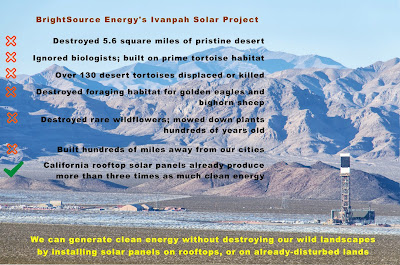How Much More Transmission Do We Need?

All of the transmission cables you see strung across the western United States and Canada could wrap around the Earth four and a half times. New Federal policies and a utility industry emphasis on connecting cities to some of the most destructive energy projects on remote wildlands has resulted in plans to add up to seven thousand circuit miles of new transmission lines in the west, alone, including several new lines in the Mojave and Sonoran deserts. The White House's latest directive on transmission seeks to institute a fast-track approval system for these lines, ostensibly to reach renewable energy projects, but fails to establish an institutional incentive for the energy industry to invest in efficiency or distributed generation as a less costly alternative to new transmission and remote power plants. This map shows transmission lines as of 2009, and only those that are 230 kilovolt (kv) or greater. Abusive Relationship The transmission system is complex, and we will



